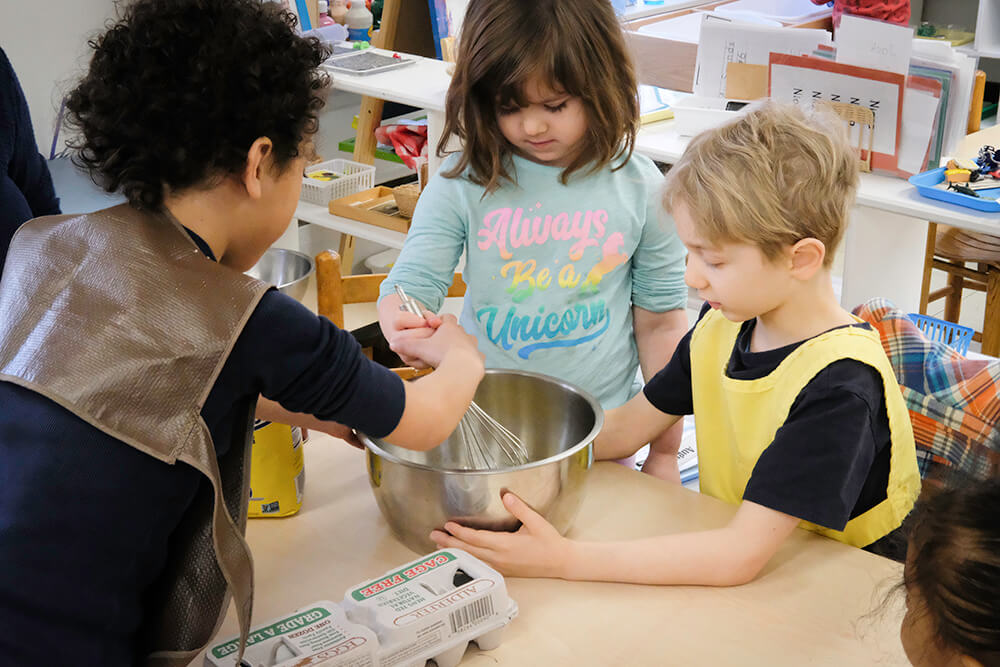
Practical Life
Maria Montessori created the exercises we call practical life for the children she was teaching once she realized how integral such work is to the child’s mental and physical development. In addition to laying the groundwork for later academic success (namely, preparing the child for writing), work in the practical life area also helps the child achieve the four developmental aims of order, concentration, coordination, and independence. The four main subjects the practical life area addresses are: control of movement, care of self, care of the environment, and grace and courtesy.
In order for the children to successfully accomplish these goals, the teacher must design and maintain a prepared environment that is both aesthetically inviting and that includes work addressing the various developmental needs of the child. Because this area in particular is the link between the child’s home and the classroom, it is important that the work therein is attractive and home-like, as well as being child-sized, so that the child can imitate the work he or she has seen a parent do at home, but do it independently of the adult.
Small muscle development will play a pivotal role in a child’s ability to write, and for this reason it is addressed plentifully in the practical life area. Through this series of lessons, the child learns to use the three-finger grip and to move the hand in a counterclockwise direction, skills which he or she will later use for writing. The work is laid out and addressed from left to right, and top to bottom, which prepares the child for reading.
Without knowing it, the children are being exposed, in practical life, to work that gives them indirect preparation for writing, as well as for more abstract ideas about quantity, as in exercises involving pouring from one to a varied number of containers. Perhaps most importantly, the practical life area provides a comfortable and familiar setting in which the child does work designed to make him or her increasingly self-reliant, independent, and expressive. Through this work, the child develops both the mental and physical skills which will serve him or her not only for later years in the classroom, but throughout life.
